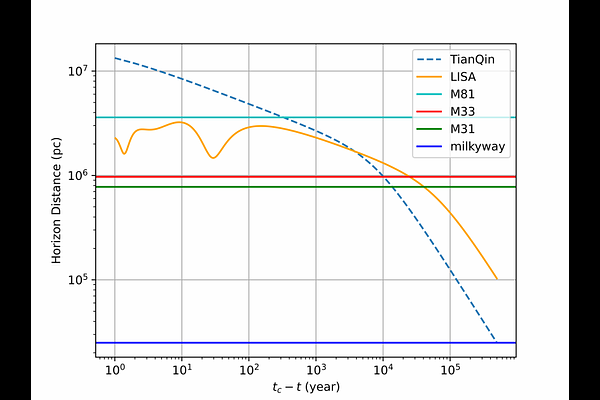Exploring the Link between Fast Radio Burst and Binary Neutron Star Origins with Spaceborne Gravitational Wave Observations

Exploring the Link between Fast Radio Burst and Binary Neutron Star Origins with Spaceborne Gravitational Wave Observations
Yu-xuan Yin, En-kun Li, Bing Zhang, Yi-Ming Hu
AbstractThe origin of repeating Fast Radio Bursts (FRBs) is an open question, with observations suggesting that at least some are associated with old stellar populations. It has been proposed that some repeating FRBs may be produced by interactions of the binary neutron star magnetospheres decades to centuries before the coalescence. These systems would also emit centi-Hertz gravitational waves during this period, which can be detectable by space-borne gravitational wave detectors. We explore the prospects of using current and future space-borne gravitational wave detectors, such as TianQin, LISA, and DECIGO, to test this FRB formation hypothesis. Focusing on nearby galaxies like M81, which hosts a repeating FRB source in a globular cluster, we calculate the detection capabilities for binary neutron star systems. Our analysis reveals that while missions like TianQin and LISA face limitations in horizon distance, changing detector pointing direction could significantly enhance detection probabilities. Considering the chance of a Milky Way-like galaxy coincidentally containing a BNS within 100 years before merger is only $3\times10^{-5}$ to $5\times10^{-3}$, if a signal is detected originating from M81, we can establish the link between FRB and binary neutron stars with a significance level of at least 2.81$\sigma$, or a Bayes factor of $4\times10^6 - 7\times10^8$ / $5\times10^2 - 10^5$ against the background model with optimistic/realistic assumptions. Next-generation detectors such as DECIGO offer enhanced capabilities and should easily detect these systems in M81 and beyond. Our work highlights the critical role of space-borne gravitational wave missions in unraveling FRB origins.